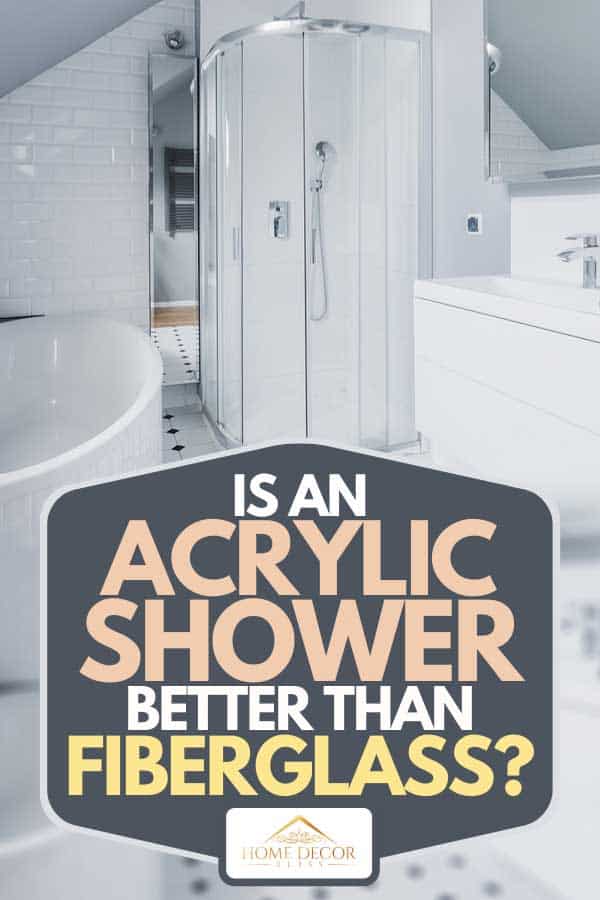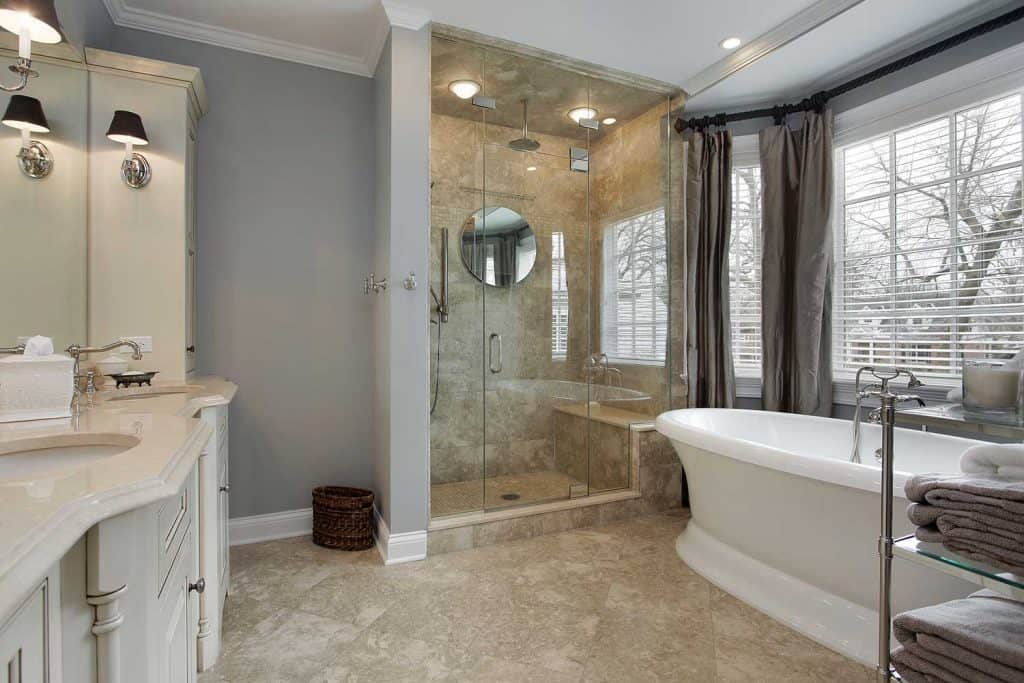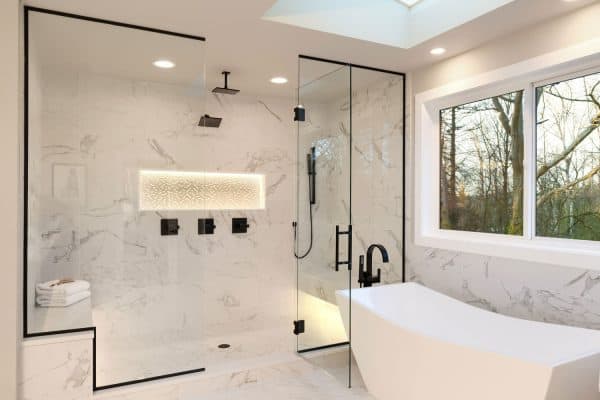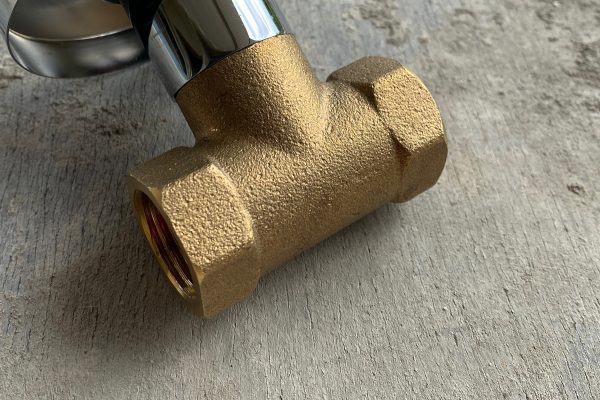When remodeling or building a new home, you may be undecided about what type of shower material to use in your bathroom. For the most part, acrylic and fiberglass are the top contenders in this space. But which is better? In this post, we will answer that for you so that you can make the best decision for your bathroom.
In terms of comparison, acrylic tends to be the best option when it comes to shower material. Here are the main benefits offered by acrylic-based showers:
- Smoother texture and high-gloss finish
- Scratch-resistant
- More durability
- Offers easy cleaning
- Has more customization options
- Its non-porous surface helps keep mold at bay
Acrylic may be a more expensive option, but it's definitely worth the investment. So, what makes it worth the investment? How do you clean acrylic showers? Is it possible to fix any cracks that may appear? To discover the answers to all these questions and more, just keep reading.

Main Benefits Of Acrylic-Based Showers
Let's take a closer look at the 6 main benefits of acrylic-based showers in greater detail.
Smoother Texture And High-Gloss Finish

We may include affiliate links and curated AI content to highlight top design styles.
The surface on acrylic showers is super-smooth and very comfortable to walk on, even when the temperatures are cooler. This means that you don't have to worry about stepping onto a shockingly cold floor when you go to take a shower. It also has a high-gloss finish, which makes it a very aesthetically appealing shower option.
Acrylic maintains the same level of glossiness throughout its lifetime (if properly maintained, that is). Fiberglass showers, on the other hand, aren't great at maintaining their shine over the years and typically aren't as smooth as their acrylic counterpart.
Scratch-Resistant
Because of their glossy smooth finish, these showers are more resistant to damage, such as chipping, scratching, and cracking. This does not mean that it is completely impervious to damage resulting from normal wear and tear; however, it does mean that with proper maintenance and regular cleaning, an acrylic shower can last quite some time.
Though fiberglass showers aren't "guaranteed" to crack or chip after a certain period of time, they are typically more prone to surface damage as a result of everyday use. Over time, the stress on the material can lead to cracks, which can lead to water leaks.
More Durability
The normal lifespan of fiberglass showers is around 15 years while acrylic showers can usually last 25 to 30 years. This is because acrylic is a thicker and more solid material than fiberglass (which is often coated in acrylic or gel). Fiberglass is comprised of small strings of glass that have been woven together to form one solid piece of material.
Acrylic showers are made from large sheets of acrylic material (which is a type of thermoplastic), which is reinforced with resin and glass fibers (yes, they actually contain some fiberglass material).
Offers Easy Cleaning
Compared to fiberglass, acrylic is easier to clean and typically doesn't require any scrubbing. And unlike other shower materials such as stone and tile, acrylic can even be cleaned with just dish soap, water, and a clean cloth. It also doesn't require regular sealing as some other shower surfaces may--which means you don't have to worry about having to water-proof it at any point.
Has More Customization Options

Another great thing about acrylic showers is that due to the nature of the material, they offer more color patterns than fiberglass. Acrylic showers can be found in a wide variety of textures, colors, and patterns. You also have more choices for the types of seating, shelving, and grab-bars that you can choose for your unit.
Fiberglass, due to its construction, simply doesn't offer the multitude of finish options that acrylic can. Units typically come in one color (often white or ivory) and they generally do not have as many texture or pattern variations to choose from.
Its Non-Porous Surface Helps Keep Mold At Bay
Acrylic is a non-porous material, which means that it's resistant to various types of mold buildup. The porous nature of fiberglass and the wet and humid environment of most bathrooms makes it susceptible to various types of mildew, mold, and bacteria. Not only is it porous, but out of all of the available options for shower material, fiberglass is probably the most brittle. It also tends to warp or "flex" over time.
What Cleaners Are Safe On An Acrylic Shower?
Acrylic showers can be cleaned with a variety of cleaning agents. However, it is recommended that you do not use abrasive cleaners or scouring pads on it, as they can cause it to dull over time. Below is a list of the most commonly recommended cleaners for acrylic showers and bathtubs:
- Vinegar and water
- Dawn dish soap & water
- Formula 409
- Fantastik
- GreenWorks natural all-purpose cleaner
- Scrub-free
- Kaboom shower tub & tile cleaner
- Zep shower tub & tile
Formula 409 is available on Amazon.
It's always best to test out a cleaning product beforehand. You can do this by simply applying the product to only a small area of the shower. Also, always be sure to review the instructions on a new cleaning product before applying it to your shower.
How Do You Clean An Acrylic Shower?
Most acrylic showers can be cleaned fairly easily with everyday cleaning agents (as mentioned above), following the directions as outlined on the back of the bottles. For the most part, cleaning it consists of applying the solution to the shower surface and then cleaning it off with a soft cloth.
However, one of the most common and less-expensive ways to clean them is to simply use vinegar and water. This combo is budget-friendly and can give you a pristine shower in just a matter of minutes.
Vinegar And Water Cleaning Steps:
- Get a spray bottle and fill it up with warm water and vinegar in equal proportions. Then gently shake the bottle so that the solution mixes well.
- Next, spray the diluted vinegar on the surfaces of your shower and let it sit for about 10-20 minutes.
- Take a soft cloth or sponge and wipe off the shower surface completely.
- Finally, rinse the entire surface with fresh water and then wipe it down one more time with a dry cloth (or microfiber cloth).
When you clean your acrylic shower, make sure to always use a soft cloth, sponge, or terry cloth towel to prevent scratching the surface. Also, if you use a clog remover or drain cleaner for your shower, be sure to thoroughly rinse the shower and drain after so that the cleaning solution does not stay on the surface of the shower floor.
Can Acrylic Showers Turn Yellow?
Yes. Acrylic showers can develop spots due to shampoos, hard water, and soap-scum. Over time, these mild stains can turn yellow and become very difficult to get rid of. This is probably the most common complaint with acrylic showers.
However, it is possible to prevent these stains and to remove them--so don't worry, you won't have to completely replace your shower should they appear. All you need is a little baking soda, H2O, and hydrogen peroxide. You can also use cream of tartar instead of baking soda.
How To Remove Yellow Stains
- In a bowl, mix one part of hydrogen peroxide with two parts of baking soda. Using a spoon or other mixing utensils, stir the ingredients together until they form a paste.
- Take the cleaning paste and apply it to the yellow stains in the shower, allowing it to sit for anywhere from 30 minutes to 1 hour.
- Next, using a sponge or washcloth, gently rub the paste into the surface in a circular motion and allow it to sit for another 5 to 10 minutes.
- Make sure that the sponge is rinsed off from the paste, and then use it to wipe down the surface with clean water.
- If there are still visible stains after they cleaning, repeat the procedure as needed, allowing the paste to sit for up to 2 hours.
Check out these non-scratch cleaning sponges on Amazon.
Preventing Yellow Stains On An Acrylic Shower
To help prevent your shower from getting yellow stains, steer clear of shower gels and bar soaps that contain paraffin, as it produces soap-scum. Another thing that you can consider is keeping a spray bottle of diluted vinegar in the bathroom and use it to give your shower a quick spray after each use. Be sure to rinse it after a few minutes.
Can You Fix A Cracked Acrylic Tub?
Yes, small cracks in acrylic tubs can be fixed fairly easily and quickly. To repair your cracked acrylic tub, you’ll need to buy an acrylic bathtub repair kit. Let's take a look at the process of how to do this. When purchasing your kit, make sure that you match the color and the kit to the same color as your acrylic tub. If not, you'll see exactly where the crack was repaired.
How To Fix Small Cracks In Your Acrylic Tub
- Start by cleaning the entire area around the crack on the acrylic tub. After, be sure to rinse and dry it completely with a soft cloth.
- Using the sandpaper in the kit, gently sand down the crack in the tub to where it has about a one-inch radius around it.
- Next, take the piece of mesh from the kit and cut it so that it can completely cover the crack, then set it aside.
- Mix all of the epoxy materials from the kid as instructed. (Note: The kits typically include a mixing bag.)
- Next, using the wooden stick applicator from the kit, spread the epoxy over the entire surface of the crack. Be sure to work fast, as the epoxy will begin to harden fairly quickly.
- Take the piece of mesh material and place it over the epoxy while it's wet.
- Next, apply epoxy to the top of the mesh, and be sure to smooth out this top layer so that it will dry evenly and smoothly.
- Wait for the epoxy to dry. And you're done!
Check out this acrylic tub repair kit on Amazon.
Wrapping Things Up
Acrylic showers and bathtubs can offer beautiful aesthetics to your bathroom decor. Hopefully, we've equipped you with a bit more knowledge about acrylic showers and their benefits.
Be sure to check out our other posts:




![Marble walled shower wall, 5 Best Types Of Shower Wall Panels To Consider For Your Bathroom Renovation [The Ultimate Guide]](https://homedecorbliss.com/wp-content/uploads/2023/07/shutterstock_2138160219-600x400.jpg)

